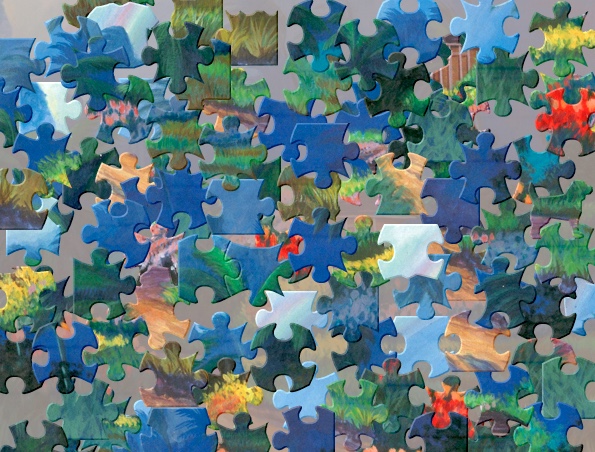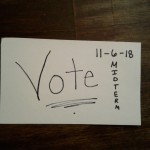We walked into a store and one of the staff members came up [to my daughter], asked her name, told her he loved her original mermaid look and that she should never change. He gave her a gift card and asked her to promise to never conform. She said she didn’t want to be like everyone else and she got a big high five. He probably had no idea how much this meant to her and to me. This year has been so hard for her. Diagnosed with ADHD and severe dyslexia, she had kids make fun of her reading, transferred to a new class and sometimes told me that she hates her brain. Thank you, for reminding her that her different brain is a wild and wonderful thing. (used with permission, edited)
As I was preparing for the new year, I was reflecting on the students who would come into my classroom. As a k-5 general music teacher, time with students in direct instruction is VERY limited, so I strive to make the most of every moment. I also have the privilege of teaching students for multiple years and getting a front row seat to their growth and development. I have a particularly soft place in my heart for those students who struggle with being “different.” Their differentness may be academic, physical, social, or emotional, but I am always drawn to those students, even before I know what sets them apart. How do I respond to their differentness? Is it a stumbling block or an asset in my class? What behaviors do I encourage and/or allow from other students? Would my friend’s daughter (above quote), be treated with respect and feel safe in my classroom?
Reading Ampthyst Sainz’s blog on preparing the learning environment encouraged me to revisit the National Board standards for my certificate: Early and Middle Childhood Music. Standards 5 and 6 really stood out to me as I reflected on preparing for my students.
Standard V: Learning Environments
Accomplished music teachers create and foster dynamic learning environments that are characterized by trust, risk taking, independence, collaboration, and high expectations for all students.Standard VI: Valuing Diversity
Accomplished music teachers value the diverse backgrounds, abilities, and perspectives of their students and provide a music curriculum that is inclusive of all students and rich in musical diversity. (National Board for Professional Teaching Standards: EMC-Music)
One of the beauties of teaching an art is that it fits into so many different boxes, you can’t put it in a box! The best way to teach music reading is to embed it in the auditory memory first….a great strategy for the needs of the dyslexic student. Music is multi-sensory and multi-layered…students with ADD can fully focus on a complex orchestral piece and hear EVERY LAYER OF SOUND!! Written music is the same around the world, so English Language Learners don’t have the barrier of communication in music, they can perform at the same level as their peers. By basing song selection on folk music, I am able to incorporate music from multiple cultures and tailor it to the cultures represented by students. Hearing impaired students discover the best place to touch an instrument to feel the vibration, participate in the movement and singing games, and develop musical expression. Introverted students feel a safety to express themselves. I’ve had the privilege of watching students who have chosen to be mute, begin to be verbal during singing games.
As I consider all of these examples of “differentness” that come through my classroom every week, I realize that my class is a place where their uniqueness CAN be an asset. I focus on their ability to participate, add to the experience of making music, and experience authentic success. By embracing this diversity in my classroom, I am fostering greatness in my students. I am so excited to see the amazing accomplishments they will bring about as they grow into adults.
The messages that we embed in the heart of each student matter. Our students already know when they are different from their peers. As educators, we can focus on believing in students, helping them find their passion, and encouraging them to follow their dreams. We can provide an environment where students respect and celebrate their differences by learning all that they have in common.
In the world of social media, we see the highlight reel of prepared environments for students. I look at those and sometimes see what I wish I could do but simply do not have space or resources to make it happen. The NBPTS standards for learning environment and diversity focus on the intangible climate in my classroom as the standard for accomplished teaching. I can look at the Pinterest rooms, grab an idea, and continue to build on the importance of relationships in the learning space.










Comments 4
Susan, I love this post! One of the main reasons I’m so devoted to building our theater program is that it is a home for students who often don’t feel like they belong anywhere else. I love that your music room has the same welcoming feel. Thanks for sharing!
I completely agree Beth. Performing arts fill a niche that nothing else fills. So glad you are doing such great work!
As a 30-year veteran of the music classroom, I appreciate the points you made in this blog.
The National Board diversity standard is often challenging for teachers whose students are rather homogeneous–but that’s seldom the case for music teachers.
As a middle school band director, I encouraged students with learning disabilities to play in the band. Using different learning modalities (listening, repeating, observing), other than straight-up reading, students with significant reading challenges often soared in band class. In addition to being genuinely successful in an academic (yes, Band is academic) class, they were part of a large group of academically mixed students–learning and having fun and performing together.
Not all secondary music teachers do that. They’re often given latitude on which students end up in their classes, and unwilling to adjust traditional read-then-perform pedagogy. If a music teacher’s goal is competition and perfection, they’re missing something important.
I strive to reach the students that struggle to find a place to “fit.” I moved a lot growing up and music/band was the constant for me. It was my automatic peer group and I would have been lost without it!